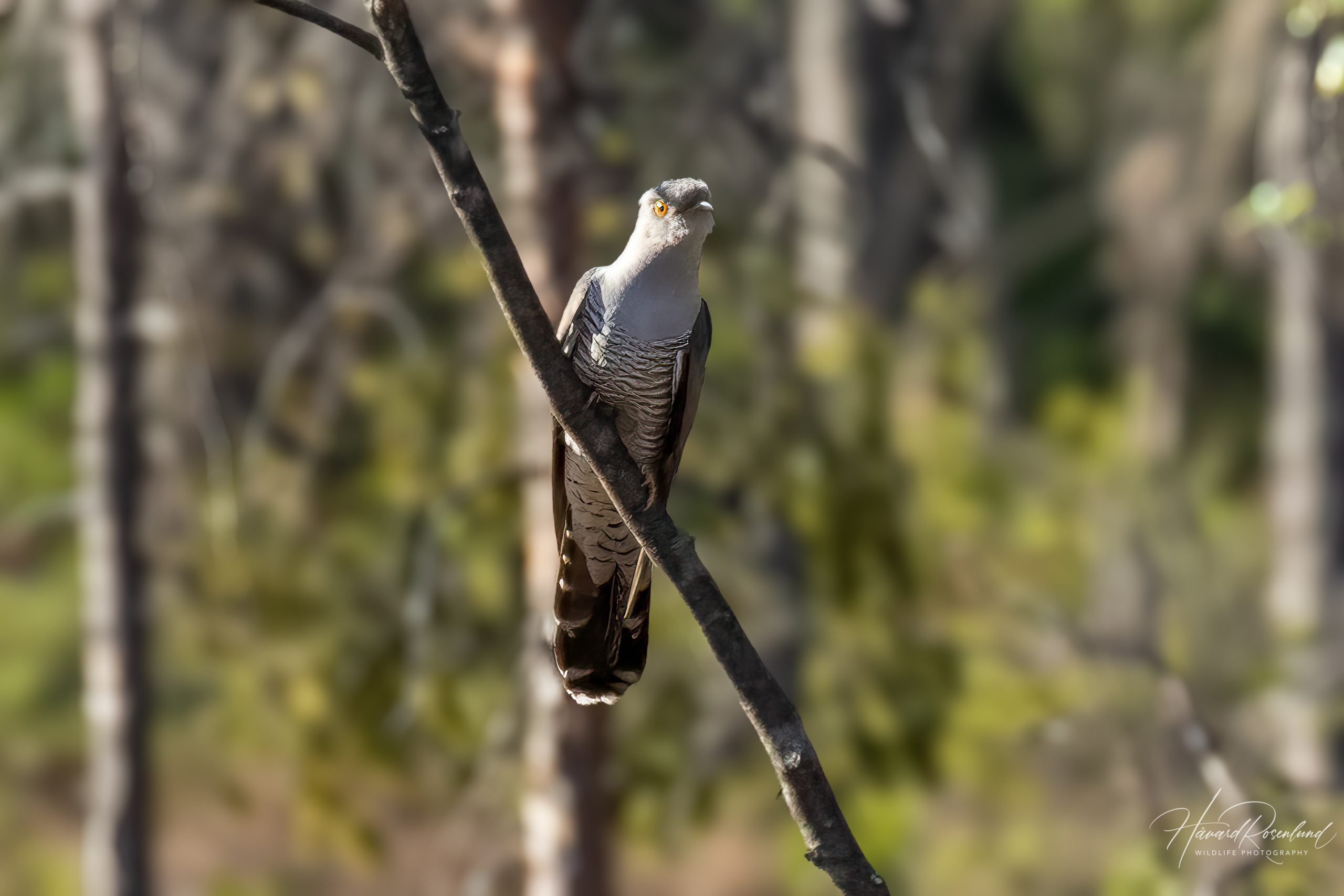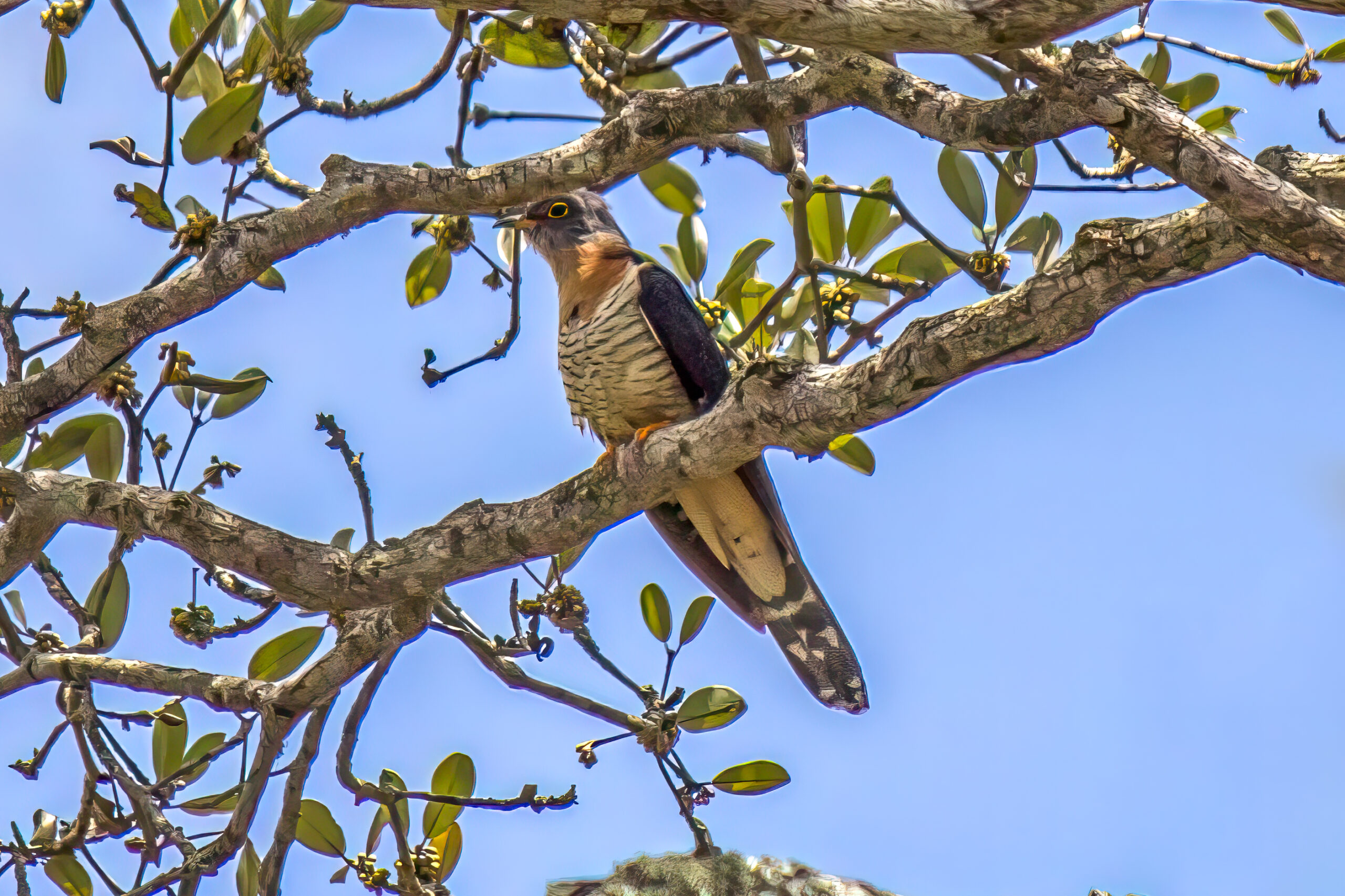Description
The common cuckoo (Cuculus canorus) is a widespread cuckoo found across Eurasia when breeding and sub-Saharan Africa when wintering. It is a medium-sized bird, measuring about 32-34 cm (12.6-13.4 in) in length, with a wingspan of 55-60 cm (22-24 in). The cuckoo’s plumage is primarily grey on the upper parts and lighter underneath, with a distinctive barred pattern on the chest. Males and females are similar in appearance, although females may show a rufous or reddish morph with additional barring on their back and wings. One key identifying feature of the common cuckoo is its long, graduated tail with white tips and dark barring. The common cuckoo’s call, a continuous and repeating “cu-ckoo”, is also one of the most familiar bird sounds in Europe during late spring and early summer. This call is also the best way to distinguish the common cuckoo from other similar cuckoos across its range.
Cuckoos are often confused with raptors, such as sparrowhawks (Accipiter nisus) due to its similar size and flight pattern, but the cuckoo’s pointed wings and distinctive call are good differentiators. The similarity with raptors is believed to be an adaptation to scare host species off their nests so the cuckoo can lay its eggs.
Diet & habitat
The common cuckoo inhabits a variety of habitats, including open woodlands, moorlands, farmlands, and reed beds. It is highly adaptable and can be found from sea level up to mountainous regions. Its diet mainly consists of insects and their larvae, with a particular fondness for caterpillars, including hairy species that are unpalatable to many other birds. The cuckoo uses a methodical feeding technique, often perching quietly before making short flights to catch prey.
Migration
The common cuckoo is a long-distance migrant, traveling from its breeding grounds in Europe and Asia to wintering areas in sub-Saharan Africa, Sri Lanka, and Southeast Asia. Migration typically occurs from late summer to early autumn, with birds returning to their breeding territories in spring. The cuckoo’s migration is remarkable for its long distances and the challenges it faces, such as crossing the Sahara Desert.
Nesting
The breeding season of the common cuckoo spans from April to July. Known for its brood parasitism, the female cuckoo lays her eggs in the nests of other bird species, often those of smaller passerines like reed warblers and dunnocks. More than 100 different host species have been recorded. A single female can lay up to 25 eggs in different nests during one breeding season.
Cuckoo eggs mimic the appearance of the host’s eggs to avoid detection. After hatching, the cuckoo chick will typically eject the host’s eggs or chicks from the nest to monopolize the food provided by the unsuspecting foster parents. It can produce calls that mimic a whole brood of host chicks, stimulating the foster parents to bring more food than they would for a single chick. Incubation lasts about 11-13 days, and the young cuckoo fledges approximately 17-21 days after hatching.
Status
The common cuckoo is currently classified as least concern by the IUCN. However, its populations are declining in parts of its range, particularly in Western Europe. Habitat loss, changes in land use, and a decrease in the population of suitable host species are contributing factors to this decline. Conservation efforts focus on habitat preservation and monitoring population trends to ensure the species remains stable.







